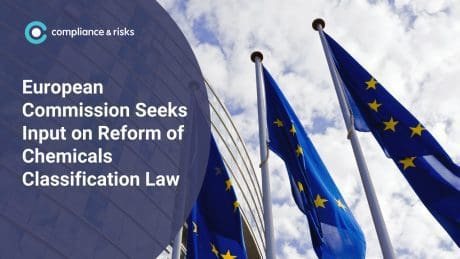
Electronics & Batteries Producer Responsibility Consultation Ends February 6th, 2019

 As part of the legal directive to transfer current government-overseen waste diversion obligations to a privately-run Individual Producer Responsibility regime (IPR), the Ontario Ministry of the Environment is currently holding consultations with stakeholders in the electronics/electrical equipment (EEE) and batteries industries regarding the coming circular economy regulation for EEE and batteries (and their packaging) and key decisions affecting industry are in the process of being made.
As part of the legal directive to transfer current government-overseen waste diversion obligations to a privately-run Individual Producer Responsibility regime (IPR), the Ontario Ministry of the Environment is currently holding consultations with stakeholders in the electronics/electrical equipment (EEE) and batteries industries regarding the coming circular economy regulation for EEE and batteries (and their packaging) and key decisions affecting industry are in the process of being made.
What’s the Mandate?
In understanding the anticipated reach of the EEE/Batteries Regulation, the Ministry is overtly promoting three goals:
– Improved Environmental Outcomes, including reduction of toxics in landfill and related greenhouse gases;
– Economic Growth, such as building more “infrastructure for reuse, refurbishment and recycling industries”; and
– Consistency, Ease, Cost Efficiency and Reduced Burden, with an emphasis on shifting the costs of waste management to individual producers and consumers with the hope that more “competition, innovation and better product design” will result.
To help relieve municipalities of waste handling obligations, and to get itself out of the business of end-of-life product diversion (which it seems intent on doing), the Ministry is giving the EEE/Batteries Regulations a potentially broad and expansionist scope. As of July 1st, 2020, EEE and batteries “producers” will be compelled to resource recover the products (or equivalencies) they put into the Ontario market.
What Could Be Caught under the EEE/Batteries Regulation?
It seems likely that the product categories of one or both of these current diversion programs will be broaden under IPR to include the:
– likely expansion from the existing 44 types of EEE to capture some or all of:
o headphones;
o routers;
o large and small appliances; and
o power tools and some categories of lighting.
- near certain addition of rechargeable batteries;
- maybe very limited types of EEE and/or batteries embedded in other products; and
- remote prospect of obligating primary, convenience and/or transportation package used with EEE and/or batteries – given paper/packaging IPR has not yet been implemented in the province.
The addition of products not currently obligated under waste diversion will create immediate needs and opportunities for industries to find new resource recovery solutions to meet these needs.
Who’s Obligated under IPR?
Along with the group of currently obligated producers – namely resident brand owners and resident importers (and, for EEE, assemblers), the Ministry is considering adding one or more other parties which have a “commercial connection” to the products, such as non-resident:
– importers;
– wholesalers;
– licencees;
– retailers (including on-line out-of-province); and
– distributors
Many of these companies would not necessarily replace any existing resident parties, but would, instead, be default-obligated for products with no resident “producers”. The sanctions contemplated for non-compliance under the EEE/Batteries Regulation may well include a prohibition against the sale of products failing to meet their resource recovery targets.
Will it be Like the Tire Regulation?
More than a year ago, stakeholders in the EEE and batteries space were already paying close attention to the Ministry’s implementation of the Tire Regulation, North America’s first comprehensive circular economy law. Given the breadth of obligations, including the producer’s private obligation to run a reverse supply chain, it’s anticipated that affected companies may respond similarly – coalescing around a limited number of producer responsibility organizations based upon commercial, industry, and market commonalities, to run end-of-life product networks that meet the unique needs of the separate producer groups.
Industry also learned through the Tire Regulation process that critical commercial outcomes can be based upon the content of the regulatory requirements and that full advantage should be taken of the windows of opportunity offered to engage the Ministry on key facets of the coming law. One such window for EEE and batteries stakeholders is closing on February 6th, 2019.








